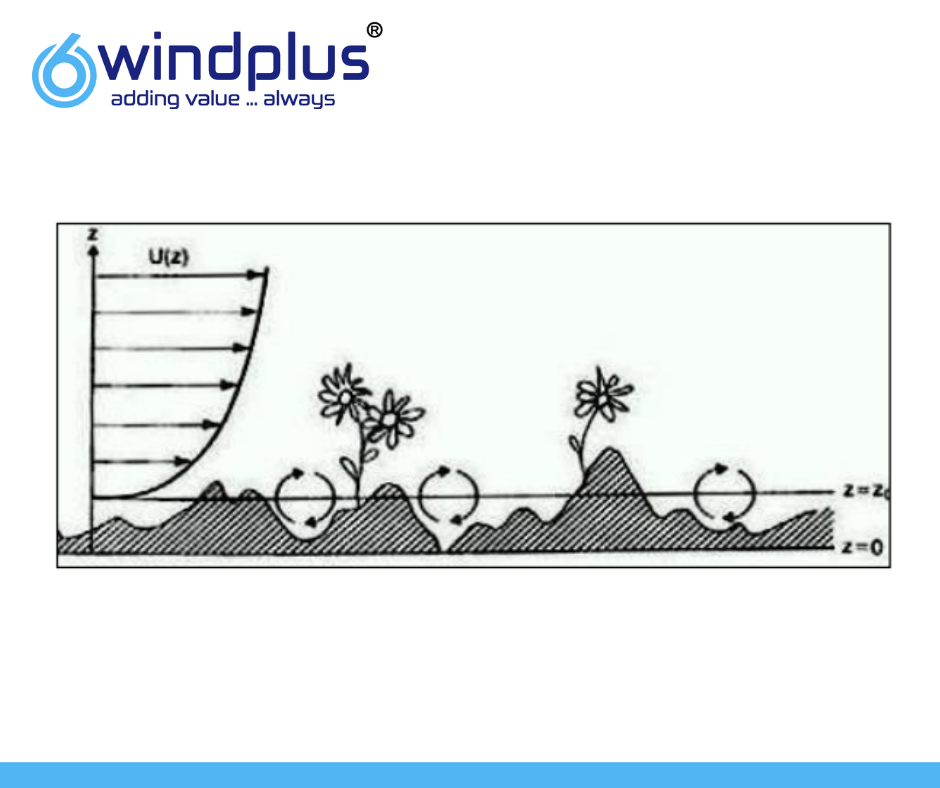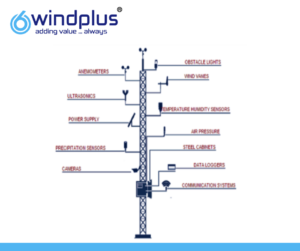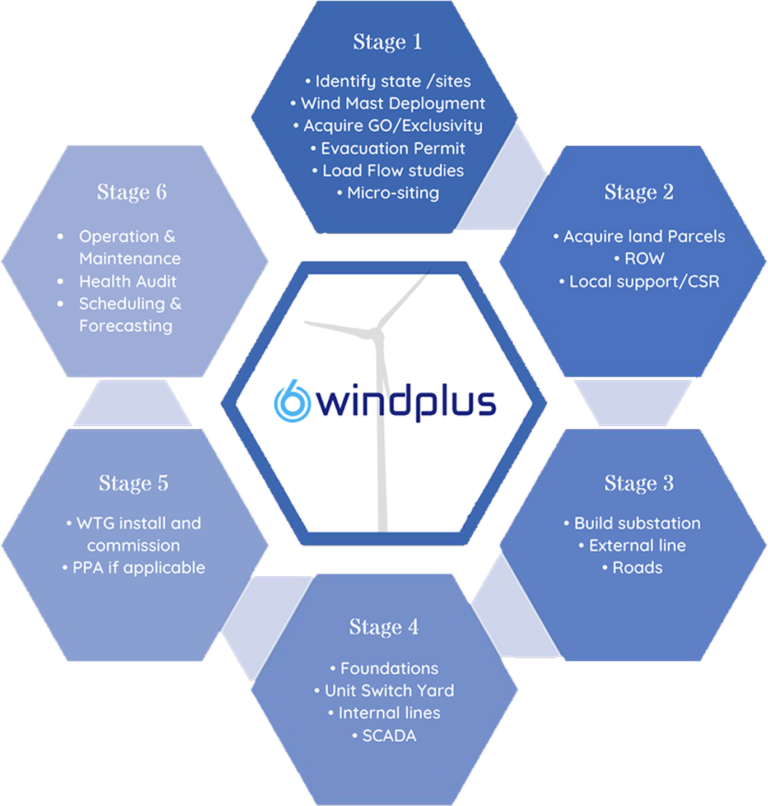Topography
The wind is influenced by the Earth’s surface when it gets closer to the ground. In order to better understand wind power meteorology, which is related to the wind flow up to 200 meters above the surface, three categories of the topography effects should be examined.
Surface Roughness
Surface terrain effects on wind flow near the ground; this phenomenon is expressed as roughness of the terrain. In climatological analysis roughness elements like flora, urbanized areas, soil and water surface and their sizes determine the roughness of the area.
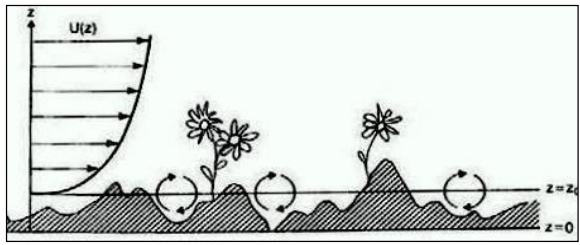
Roughness is parameterized by a simple length scale, the roughness length z0. This length is a mathematical factor used in the formula for logarithmic wind profile, which shows how wind speed is influenced by the terrain.
Obstacles
Second category of local effects on wind flow is different kinds of obstacles, like buildings in urban area. A general classification of obstacles can be defined depending on the porosity of the obstacles that can be examined from detailed maps or by observation. Dimensions, positions and porosity of the obstacles should be taken into account when modelling.
Terrain Orography
Height differences of the terrain describe the term orography. Orography can be described by height contour lines of the surface. The terrain can be classified into three general types: flat, hilly and mountainous.
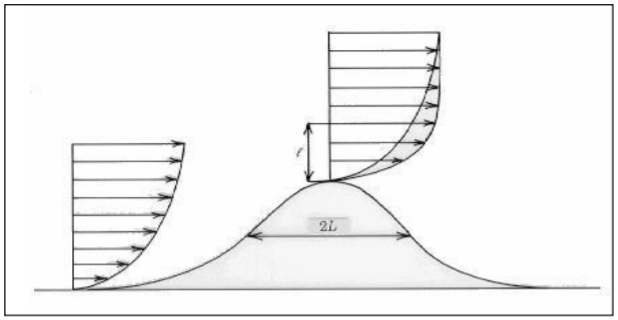
The terrain in which the orographic effects are insignificant and only the roughness affects the wind flow is called flat terrain. Hilly terrain represents the land where the slopes are less steep than about 0.3. Hills have a significant influence on the wind speed. A smooth and not too steep hill causes acceleration of the wind and makes the wind speed up when flowing towards the hill top. The resultant increase in energy content is called hill impact.
In mountainous terrain, the slopes are steeper than in hilly terrain and it results on flow separation. Terrain with high mountains and steep inclinations is called complex terrain. In that type of terrain, the wind flow is very hard to predict and model by linear models. For this reason non-linear models or measurements must be used.
Forest
The figure below shows the velocity profile in a forest canopy. Due to the internal boundary layer effect the logarithmic wind profile is affected by canopy lay
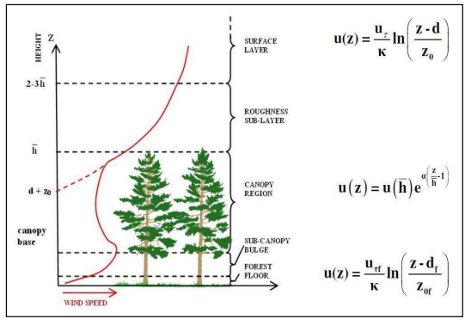
These are the various terrain data which must be analyzed for Annual Energy Production

